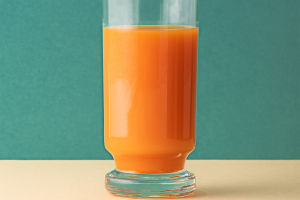Freshly squeezed juices are celebrated for their vibrant taste and rich nutritional content.
However, preserving these qualities over time can be challenging.
Various factors, including the type of juice, production process, and storage conditions, significantly impact the shelf life of freshly squeezed juice. This article delves into these factors and offers practical advice on properly preserving your juice to maintain its flavor and nutritional value.
How Long Does Freshly Squeezed Juice Last?
Without any preservatives, freshly squeezed juice has a minimal shelf life. When left at room temperature, juice should be consumed within 6 hours to ensure it remains safe and nutritious.
In hot summer conditions, this window shortens to about 2 hours due to the accelerated rate of vitamin degradation and spoilage.
Over time, the juice loses its nutritional value and changes in taste and texture, becoming sour and less appealing. Therefore, it's best to drink freshly squeezed juice as soon as possible to enjoy its full benefits.
The Impact of the Production Process on Shelf Life
The way you produce your freshly squeezed juice significantly affects its longevity. Consider the following key points:
1. Hygiene: Ensuring that all equipment, such as juicers, knives, and containers, is clean can reduce contamination risk. This helps prevent bacteria and other microorganisms that can cause spoilage from being introduced.
2. Minimize Air Contact: Exposure to air can oxidize the juice, leading to a loss of vitamins and flavor. To minimize this, try to limit the time the juice is in contact with air during the juicing process.
3. Immediate Bottling and Sealing: Bottling and sealing the juice immediately after extraction reduces oxygen exposure and bacterial intrusion, thereby extending its shelf life.
The Importance of Storage Conditions
Storage conditions play a crucial role in preserving the quality of freshly squeezed juice. Ideally, juice should be stored in the refrigerator between 0 and 4 degrees Celsius.
Even at these low temperatures, enzymes and microorganisms in the juice will continue to act, albeit more slowly, causing the juice to lose its freshness and nutritional value gradually. Typically, refrigerated juice can be kept for 4 to 6 hours before noticeable degradation occurs.
How to Preserve Freshly Squeezed Juice
To maximize the shelf life and maintain the quality of your juice, consider the following methods:
1. Refrigerated Storage: If you have a large batch of juice or need to store it for later consumption, pour it into a glass bottle and refrigerate it. This method preserves the juice for up to a day while maintaining its taste and quality.
Refrigeration slows down the degradation process and keeps the juice cool and refreshing.
2. Room Temperature Storage: Freshly squeezed juice can be stored at room temperature for 4 to 6 hours, provided it is not directly exposed to air.
Store the juice in a sealed glass or plastic bottle to prevent bacterial contamination, and place it in a cool, ventilated area. However, consuming the juice as soon as possible is advisable to ensure its freshness.
3. Vacuum Storage: Vacuum-sealed bags designed for juice storage are an excellent option for extending shelf life. Removing air from the bag creates a vacuum environment that slows down oxidation and spoilage.
When ready to drink, open the bag to allow air back in. This method can preserve juice for several days without significant loss of quality.
Conclusion
Multiple factors, including the type of juice, the production process, and storage conditions, influence freshly squeezed juice's shelf life. While refrigeration can extend the storage time, it might slightly alter the flavour and texture of the juice.
To maintain the optimal flavour and nutritional value, it is recommended to use fresh fruits, adhere to hygienic practices during production, and consume the juice as soon as possible. By following these guidelines, you can enjoy freshly squeezed juice's delicious taste and health benefits.


